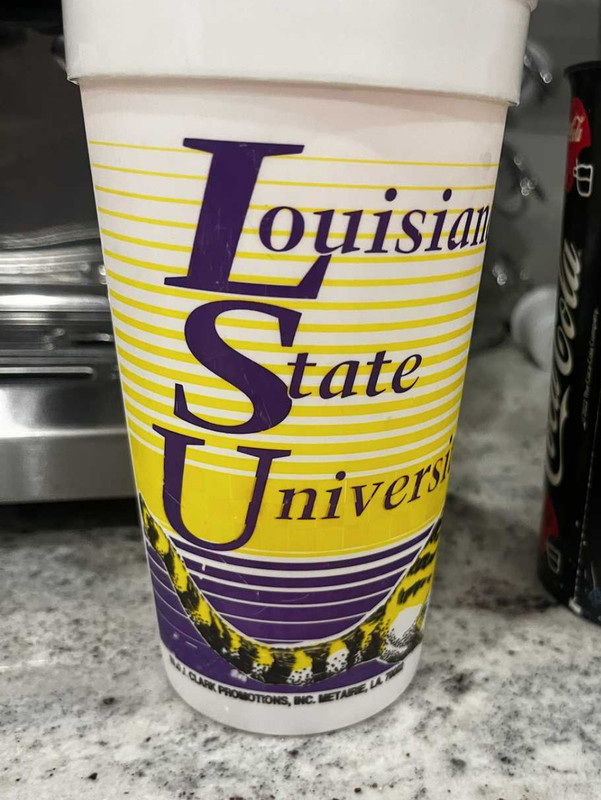- My Forums
- Tiger Rant
- LSU Recruiting
- SEC Rant
- Saints Talk
- Pelicans Talk
- More Sports Board
- Coaching Changes
- Fantasy Sports
- Golf Board
- Soccer Board
- O-T Lounge
- Tech Board
- Home/Garden Board
- Outdoor Board
- Health/Fitness Board
- Movie/TV Board
- Book Board
- Music Board
- Political Talk
- Money Talk
- Fark Board
- Gaming Board
- Travel Board
- Food/Drink Board
- Ticket Exchange
- TD Help Board
Customize My Forums- View All Forums
- Show Left Links
- Topic Sort Options
- Trending Topics
- Recent Topics
- Active Topics
Started By
Message
DripCal.... It simply can not be right.......
Posted on 11/5/25 at 10:05 pm
Posted on 11/5/25 at 10:05 pm
So some funds that have a high payout % have NAV erosion. We all have talked about the NAV on Yieldmax.
That's led me to do a deeper dive into funds like this and I came across a video on dripcalc.com.
I can pull up any ticker, and it will populate the details from price, to dividend% and how much depreciation of the dividend is. It has the Share Price growth.
I decided to check ULTY. The results simply can not be right.
It shows:
Dividend Growth Rate: -25% (negative.. meaning the divi amount drops over time)
Share Price Growth: -56% (negative share price growth)
Dividend Amount: .079 cents weekly.
With a 10K investment, drip, and no other money put in here are the results:
1(year) $10,000 2,128 $2.68(share price) $0.08(divi amount) 20.17% 155.26% $15,526 $15,526 6,831 $18,283(end balance)
3(year) $48,115(starting balance) 31,567 $0.87 (Share Price) $0.04(Divi Amount) 34.98% 2100.54% 234,743(end Shares) $203,760(end balance)
$210,054 in dividends at the end of year 3? What?
LINK
I decided to check that against Market Beat's dripcalc... I used the same negative numbers.. the -25% dividend growth rate and the -56% price growth rate.
3(year) 60966.07(shares owned) $10.45(dividend annualized) $637,080.24(Dividend payout) $541,518.20(minus taxes)
None of that can be right.
I would like to know how to get a legit look at this. On the link, If I move the dividend growth rate to 0% and to a 0% growth in price... It's WAY less. Look at year 3:
$56,607 12,044 $4.70 $0.08 20.17% 780.75% $78,075 $124,682 28,656 $134,682(ending balance)
The only thing I can think of is that with the depreciation of the price of the ETF, the amount of shares just over take the nav???
That's led me to do a deeper dive into funds like this and I came across a video on dripcalc.com.
I can pull up any ticker, and it will populate the details from price, to dividend% and how much depreciation of the dividend is. It has the Share Price growth.
I decided to check ULTY. The results simply can not be right.
It shows:
Dividend Growth Rate: -25% (negative.. meaning the divi amount drops over time)
Share Price Growth: -56% (negative share price growth)
Dividend Amount: .079 cents weekly.
With a 10K investment, drip, and no other money put in here are the results:
1(year) $10,000 2,128 $2.68(share price) $0.08(divi amount) 20.17% 155.26% $15,526 $15,526 6,831 $18,283(end balance)
3(year) $48,115(starting balance) 31,567 $0.87 (Share Price) $0.04(Divi Amount) 34.98% 2100.54% 234,743(end Shares) $203,760(end balance)
$210,054 in dividends at the end of year 3? What?
LINK
I decided to check that against Market Beat's dripcalc... I used the same negative numbers.. the -25% dividend growth rate and the -56% price growth rate.
3(year) 60966.07(shares owned) $10.45(dividend annualized) $637,080.24(Dividend payout) $541,518.20(minus taxes)
None of that can be right.
I would like to know how to get a legit look at this. On the link, If I move the dividend growth rate to 0% and to a 0% growth in price... It's WAY less. Look at year 3:
$56,607 12,044 $4.70 $0.08 20.17% 780.75% $78,075 $124,682 28,656 $134,682(ending balance)
The only thing I can think of is that with the depreciation of the price of the ETF, the amount of shares just over take the nav???
This post was edited on 11/6/25 at 7:45 am
Posted on 11/6/25 at 5:54 am to BCreed1
Stock price has been dropping like a rock but that weekly divy...

I mean... it's currently ~1.7% of the stock's price. I don't understand how they are affording it without doing some creative accounting.

I mean... it's currently ~1.7% of the stock's price. I don't understand how they are affording it without doing some creative accounting.
Posted on 11/6/25 at 6:51 am to BCreed1
It’s interesting.
I know you’ve read this, but for those interested.
I know you’ve read this, but for those interested.
quote:
What is DRIP (Dividend Reinvestment)? DRIP is a process for reinvesting your stock dividends into buying more shares of your stock. Instead of taking cash, you reinvest the dividends, so that on the next dividend payout, you will have more shares of stock, that will pay you more dividends. When you “DRIP” for a long time, you create a what is known as “Dividend Snowball” effect.
For example: If you invest $10,000 into a company paying 8% dividend (assuming dividend does not decrease in the future), and assuming an annual increase in dividends of 4%, and share price will increase an average of 5% per year, and you DRIP or reinvest ALL your dividends, in 10 years, your initial $10K will turn into $32,469.
This equals a compound growth (CAGR) of 224.69% or 22.469% per year! If you continue holding this same position for 20 years, your total growth will be 937.1% or 46.86% per year, and your $10,000 investment will turn into $103,710 What are the risks with DRIP?
As with any investment, risks are limitless, and you could end up losing your entire investment. This however is not very likely, as most companies do not go bankrupt. There are other risks, such as company cutting its dividends. This is much more common. However, there are companies known as Dividend Kings and Dividend Aristocrats, which are known to respectively increase their dividends for at least 50 and 25 years in a row! When investing in Dividend Kings and Dividend Aristocrats, your risks are historically much lower (but still are real). Buying HIGH Yield (Low Growth) vs. LOW Yield (High Growth) stocks: Here we cannot tell you which one is better. But a simple calculation for SCHD stock (high dividend growth ETF based on S&P500 Dividends Index), which has historically increased their dividends by 12.82% over past 10 years and increased in share price by 11.8% over same period, it would take at least 10 years to catch up to an 8% Dividend Yield stock (if same price appreciation and dividend increases continue).
However, by year 20, it is estimated to grow from $10,000 to $162,044, which beats our “hypothetical” 8% yield stock by $48,334 in total returns or about 55%!
Posted on 11/6/25 at 6:57 am to BCreed1
It’s the weekly compounding of returns that gives that impression. You’re also using linear inputs. As the share price decreases, the reduction in dividends also increases.
I’ve followed ULTY on totalrealreturns.com for a few months, and it’s like watching race qualifying.
A couple months ago the returns were like 20%, but by September it was 10%, now it’s at 0%. Moving forward, anyone that got in after May will be increasingly under water.
I’ve followed ULTY on totalrealreturns.com for a few months, and it’s like watching race qualifying.
A couple months ago the returns were like 20%, but by September it was 10%, now it’s at 0%. Moving forward, anyone that got in after May will be increasingly under water.
Posted on 11/6/25 at 7:06 am to Bard
The creative accounting is the dividend is simply a return of capital.
If the equity isn’t generating income, then the money has to come from somewhere.
Thus the NAV erosion to keep up with the dividend payout.
It’s likely more complicated than this.
If the equity isn’t generating income, then the money has to come from somewhere.
Thus the NAV erosion to keep up with the dividend payout.
It’s likely more complicated than this.
Posted on 11/6/25 at 7:25 am to horsesandbulls
Yeah, Yieldmax is selling you on the idea they run a perpetual motion machine. In a perfect world you’re getting a free loan each month from an asset you assume will be worth more in the future…which then allows you to DRIP it and get free returns, which in turn snowballs over time.
This post was edited on 11/6/25 at 7:27 am
Posted on 11/6/25 at 7:42 am to lsuconnman
quote:
It’s the weekly compounding of returns that gives that impression. You’re also using linear inputs. As the share price decreases, the reduction in dividends also increases.
Correct. It does, but Dripcalc is calculating that. The Dividend goes from it's current .079 in year 1 to .04 by year 3.
Posted on 11/6/25 at 8:02 am to BCreed1
I’m not a mathematician. But I assume the .04 at the end is a specific percentage of the share price that remains unchanged.
As long as the relationship remains constant, it’s a money making hack in either direction. The minute any variance is introduced it collapses.
As long as the relationship remains constant, it’s a money making hack in either direction. The minute any variance is introduced it collapses.
Popular
Back to top

 3
3








